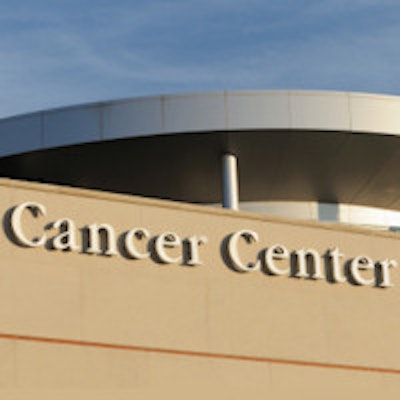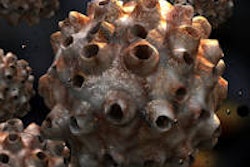
U.S. researchers have developed a framework for exploiting the oral microbiome for monitoring oral cancer development, progression, and recurrence, according to a new article in PLOS One.
Titled "Changes in abundance of oral microbiota associated with oral cancer," the research was published online on June 2.
The researchers began with the question, if there is a role for bacterial infection in causing or promoting other cancers (such as gallbladder, colon, lung, and prostate cancers) is it reasonable to ask if shifts in the composition of the normal oral cavity microbiome (comprised of more than 600 different bacterial species) and/or chronic bacterial infection could be promoters or causes of oral cancer?
 Donna Albertson, PhD, and Brian Schmidt, MD, PhD. Image courtesy of New York University.
Donna Albertson, PhD, and Brian Schmidt, MD, PhD. Image courtesy of New York University."The major risk factors, tobacco and alcohol use, alone cannot explain the changes in incidence, because oral cancer also commonly occurs in patients without a history of tobacco or alcohol exposure," said lead researcher Brian Schmidt, MD, PhD, a professor of oral and maxillofacial surgery and the director of the Bluestone Center for Clinical Research at the New York University College of Dentistry (NYUCD), in a press release.
Changes in the microbial community are commonly associated with diseases such as periodontal disease, which is most likely a polymicrobial disease characterized by outgrowth of certain pathologic organisms. Chronic periodontitis has been reported to be a risk factor for oral premalignant lesions and cancers.
"We know that other cancers, including gallbladder, colon, lung, and prostate have been associated with particular bacterial infections, so we hypothesized that shifts in the composition of the normal oral cavity microbiome could be promoters or causes of oral cancer," said Donna Albertson, PhD, a professor of oral and maxillofacial surgery at the Bluestone Center.
The researchers profiled cancers and anatomically matched contralateral normal tissue from the same patient by sequencing 16S rDNA hypervariable region amplicons. The team's findings were used to start to develop a framework for exploiting the oral microbiome for monitoring oral cancer development, progression, and recurrence.
“The major risk factors ... alone cannot explain the changes in incidence, because oral cancer also commonly occurs in patients without a history of tobacco or alcohol exposure.”
In cancer samples from both a discovery (n = 5) and a subsequent confirmation cohort (n = 10), abundance of Firmicutes (especially Streptococcus) and Actinobacteria (especially Rothia) was significantly decreased relative to contralateral normal samples from the same patient.
Significant decreases in abundance of these phyla were observed for precancers, but not when comparing samples from contralateral sites (tongue and floor of mouth) from healthy individuals. Using differences in abundance of the genera Actinomyces, Rothia, Streptococcus, and Fusobacterium, the team was able to separate most cancer samples from precancer and normal samples.
"The oral cavity offers a relatively unique opportunity to screen at risk individuals for (oral) cancer, because the lesions can be seen, and, as we found, the shift in the microbiome of the cancer and precancer lesions compared to anatomically matched clinically normal tissue from the same individual can be detected in noninvasively collected swab samples." Dr. Schmidt said.
Noninvasively sampling the microbiome of oral lesions and corresponding normal tissue opens the possibility to not only detect cancer-associated changes at one time point, but the relative stability of the adult oral microbiome also offers the opportunity to monitor shifts in bacterial communities over time.
"Here we observed changes in the microbiome, which, in future larger studies, may be confirmed as a potential biomarker of oral cancers or precancers, and may even have utility to discriminate patients with lymph node metastases," Albertson noted. "In addition, there are other challenges in clinical management of oral cancers that would benefit from better diagnostic tools."
Oral cancer patients are also at risk of second primary cancers and recurrences. The microbiome may provide signatures that can be used as a biomarker for monitoring field changes associated with the high rate of second primary oral cancers and recurrences. The team also noted the possibility of medically modulating the oral microbiome for treatment of oral precancers and damaged fields (field cancerization).
More than 20,000 Americans are diagnosed with oral cancer each year, the researchers noted. Worldwide, the incidence of oral cancer is increasing, particularly among young people and women, with an estimated 350,000 to 400,000 new cases diagnosed each year.
The five-year survival rate in the U.S. is about 40%, which is one of the lowest survival rates of the major cancers. This rate has not improved in the past 40 years, according to the researchers. More people die each year in the U.S. from oral cancer than from melanoma, cervical, or ovarian cancers.



















